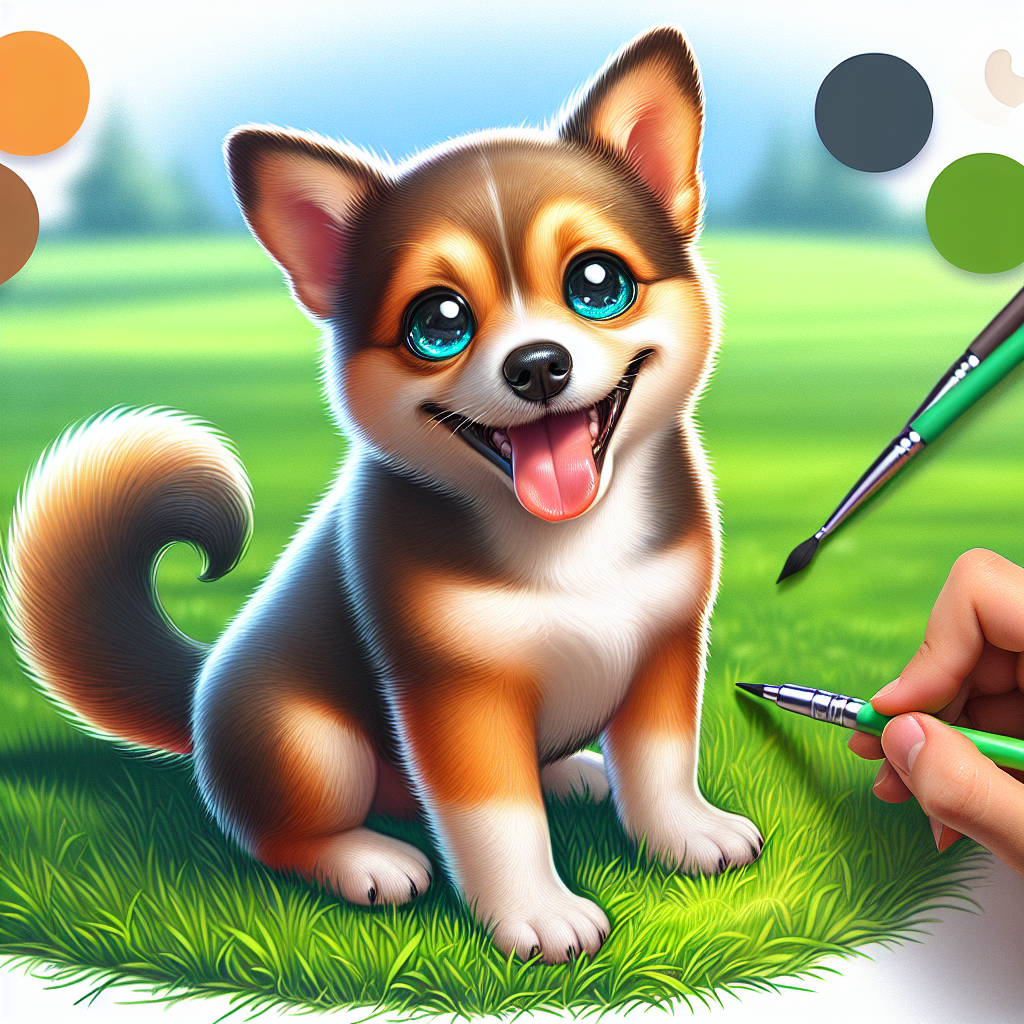The Flea Invasion: Understanding the Enemy

Oh, fleas. Those tiny little vampires. They waltz right into your life, and before you know it, they’re throwing a party for their extended family in your home. It’s like having uninvited guests who don’t know when to leave. Let’s get to the bottom of this flea infestation, shall we?
Fleas are more than just annoying little jumpers. They’re sturdy. One minute, you’re enjoying a lazy afternoon, and the next—bam!—flea infestation signs everywhere. You notice your furry buddy scratching like there’s no tomorrow. Maybe you spot tiny dark dots hopping across your couch. Fleas can cause chaos, and once they’re in, they don’t plan on leaving anytime soon.
But the first step is understanding the enemy. These pests thrive in warm, humid environments. They’re not just hitching a ride on your pet. They’re hiding in your carpets, bedding, and even in the cracks between your floorboards. Sneaky, right? Knowing where they come from and how they operate gives you the upper hand. Because if you’re gonna fight fleas, you gotta think like a flea.
Identifying Flea Hotspots in Your Home
Now, let’s play detective. If you’re dealing with fleas, you need to know their favorite hideouts—common flea hiding spots can be pretty surprising. They love cozy, dark places where they can lay eggs and plan world domination. Your pet’s bedding? That’s a given. But how about that old carpet in the basement or the pile of laundry you left on the floor? Fleas aren’t picky.
Remember the time you found your cat lounging in the sunniest spot? Fleas love that spot, too. They hang out where your pets spend most of their time. Those tiny critters are smarter than you think.
So, grab a flashlight and start your hunt. Look for flea eggs, or those tiny dark specks—flea dirt, as they call it. It’s not a glamorous job, but hey, someone’s gotta do it. You’ll need to be thorough, and maybe even a little obsessive. It’s all part of the flea-fighting game.
Quick Fixes: Immediate Actions to Take
Alright, so you’ve found the enemy hideouts. Now what? Time for some emergency flea control. This ain’t a drill—it’s do or die. You gotta act fast before they spread like wildfire.
First things first, vacuum like there’s no tomorrow. I mean it. Vacuum every nook and cranny, even if it means moving that heavy couch you’ve been avoiding. Fleas hate it, and it’s one of the quickest ways to get them on the run. Empty that vacuum bag pronto—it’s like a getaway car for fleas.
Then, wash everything. And I mean everything. Your pet’s bedding, your bedding, that old t-shirt you’ve been meaning to donate. Hot water is your new best friend. It kills fleas and their eggs—no mercy.
And if things get real bad, consider calling in the professionals. Sometimes, you gotta bring out the big guns to reclaim your home from these little invaders.
Natural Remedies: Fighting Fleas Without Chemicals
Now, if you’re like me and chemicals make you uneasy, don’t worry. There are non-toxic flea treatments that can save the day. Mother Nature’s got a few tricks up her sleeve.
Take diatomaceous earth, for instance. It sounds fancy, but it’s just a type of rock powder that’s harmless to humans and pets. Fleas, though? It’s like walking on broken glass for them. Sprinkle it around the hotspots, let it sit for a day or two, and vacuum it up. It’s simple, effective, and you won’t have to worry about your house smelling like a science experiment.
Or try some essential oils. A few drops of lavender or cedarwood oil in a spray bottle with water can work wonders. Spray it around the house—it’s like a spa day for you, but a nightmare for fleas.
And let’s not forget good old-fashioned soap and water. A dish soap trap might sound odd, but it works. Fleas are drawn to light, so place a dish of soapy water under a lamp. It’s like a flea magnet.
Preparing for Battle: Gathering Your Supplies
Alright, soldier, it’s time to gear up. If you’re serious about getting rid of fleas, you need the right tools. We’re talking flea-fighting tools that can turn the tide in this battle.
First, invest in a good flea comb. It’s a simple tool, but it can make a world of difference. Use it on your pets to catch fleas before they jump ship. It’s oddly satisfying and your pets will thank you for it.
Next, stock up on diatomaceous earth and essential oils. These aren’t just for the initial fight, but for ongoing prevention. Keeping a stash means you’re always ready to act.
And don’t overlook flea prevention steps. Regular grooming and cleaning routines can keep those pests at bay. A little vigilance goes a long way.
Remember, this is your home. You’re the boss. Fleas don’t stand a chance when you’re prepared and determined. So roll up your sleeves, take a deep breath, and dive into the battle. You’ve got this. Thanks for sticking around. Now, go out there and show those fleas who’s really in charge.
Let’s Look at Flea Sprays and Powders
Alright, picture this: you’re standing in the aisle of a store, surrounded by rows of bottles and boxes, all promising to rid your home of fleas. It’s like being in a candy store, but for pest control. The best flea sprays for home aren’t just about zapping those little buggers—they’re about reclaiming your space. You give a quick spritz here, a sprinkle of flea powder for carpets there, and suddenly, you’re the sheriff in town, laying down the law. Flea sprays and powders are your ammunition in this battle, and they pack a punch. But hey, don’t just go crazy with it. Remember to read the label—those instructions are there for a reason. You don’t want to overdo it and end up with a house smelling like a chemical factory. Trust me, been there, done that, and it ain’t pretty.
The Power of a Flea Comb
Now, on to something a bit more hands-on—the flea comb. If you’re like me, and you enjoy the old-school approach, this one’s for you. A flea comb is simple. Just a fine-toothed comb that will make those fleas tremble in their tiny boots. How to use a flea comb? It’s all in the wrist, my friend. You gently run it through your pet’s fur, and voilà! You’ve hit the jackpot of fleas. It’s strangely satisfying, like popping bubble wrap. But don’t get too carried away. Remember to have a bowl of soapy water handy to dunk the comb into—those fleas aren’t going to just sit around waiting for you to deal with them later. This method isn’t just effective; it’s almost therapeutic. Like a little bonding session with your pet while you do some good old-fashioned pest control. Plus, there’s something about doing it yourself that makes you feel like you’ve really accomplished something. And who doesn’t love a good DIY project? Even if it involves fleas.
Laundry Day—Washing Away the Problem
Ah, laundry day—the bane of my existence. But it’s a necessary evil. Especially when it comes to getting rid of those pesky fleas. Washing pet bedding for fleas is a crucial step, and boy does it work wonders. Fleas love to make themselves at home in your pet’s bedding, and if you don’t wash it regularly, you’re just inviting more trouble. Hot water is the secret weapon here. It’s like sending those fleas off to a spa day they never signed up for. Just toss everything in, crank up the heat, and let the magic happen. You might have to do this more than once, depending on how big your flea problem is. But trust me, it’s worth it. And while you’re at it, throw in any other fabrics that might have been in contact with your pet. The more, the merrier. This is one of those times when a little extra effort goes a long way. And when you finally get to curl up in your flea-free home, you’ll be glad you put in the work.
Cracking the Code: Flea Traps
Now, let’s talk traps. No, not the kind you’d find in a cheesy horror movie. I’m talking about DIY flea traps for home. These little contraptions are like flea hotels, where check-out is never an option. It’s all about setting them up in the right place and letting them do their thing. A little dish soap, a little water, and a light source—that’s all you need. You place these around your house, and let the magic happen. It’s like watching a science experiment unfold in your living room. You sit back, sip your coffee, and watch those fleas fall right into your trap. And the best part? You didn’t have to lift a finger—well, except to set the trap. It’s a little slice of satisfaction, knowing you’re outsmarting those tiny pests. Plus, it’s a great conversation starter when you have guests over. Nothing like a good flea trap story to liven up a dinner party. Just remember to empty them out regularly, or you’ll end up with a whole new problem on your hands.
Keeping the Backyard Uninviting for Fleas
Finally, let’s head outside. Your backyard is a flea playground if you’re not careful. It’s like a theme park for them, with all the grass, plants, and unsuspecting pets to hop on. But fear not, because you can make it less appealing. Prevent fleas in the yard by keeping the grass short and tidy. Trim those bushes, clear away debris, and make sure there’s no standing water around. Fleas thrive in moist environments, so the drier, the better. And don’t forget about natural flea repellents for garden. Things like cedar chips, diatomaceous earth, and certain plants can help keep those fleas at bay. It’s like giving your yard a flea-repellent makeover. Not only will your garden look great, but it’ll also be a lot less inviting to those pesky fleas. It’s all about creating an environment that says, “You’re not welcome here.” So get out there, roll up your sleeves, and show those fleas who’s boss. With a little effort, you can turn your backyard into a flea-free zone. And when you do, you’ll be the hero of your own story—no cape required.
Well, folks, there it is. A few tricks and tools to help you tackle the flea problem in your home. It’s not a sprint, but a marathon, and with a little patience, you’ll get there. Keep at it, and soon enough, you’ll have a home that’s blissfully boring to those little pests. Thanks for sticking with me through this journey. Now go out there and show those fleas who’s boss!
Dealing with a Flea Infestation in Your Yard
Let me tell you, dealing with fleas in your home is like playing an endless game of whack-a-mole. Just when you think you’ve got them all—bam, another one pops up. But here’s the thing: the battleground isn’t just inside your house. Oh no, those little buggers love to hang out in your yard too. So, let’s talk about flea control for yards.
Imagine this: It’s a sunny afternoon. You’re sipping lemonade on your porch, feeling all sorts of zen. But beneath your feet, an army of fleas is plotting to invade your home. Creepy, right? The yard is their launchpad. They’re waiting for your dog—or even you—to step outside and bring them indoors.
So, what’s the plan? First off, keep your grass trimmed and your yard tidy. Fleas love shady, moist spots, and an overgrown lawn is like a five-star resort for them. Next, consider some yard flea prevention methods. Nematodes—tiny, worm-like creatures—are natural predators of fleas. Sprinkle them around your yard, and they’ll hunt down those fleas like tiny terminators. Not bad for something you can’t even see, huh?
Also, if you’ve got a compost pile, keep it away from where your pets roam. Fleas love decaying matter. It’s their version of a beach party. Remember, every little action helps in how to get rid of fleas in your home.
Natural Remedies for Fleas: What Works and What Doesn’t
Now, let’s dive into natural flea remedies for home. Everyone and their grandma seem to have a remedy involving vinegar or essential oils. But do they work? Sometimes. But sometimes, not so much.
Let’s be honest. Natural remedies are like that quirky friend who sometimes shows up on time but usually gets lost on the way. Some effective natural flea solutions include diatomaceous earth and lemon spray. Diatomaceous earth is a fine powder that dehydrates fleas. Sprinkle it on carpets and pet bedding, but remember to vacuum it up later. Lemon spray? Easy peasy. Boil a sliced lemon in water, let it sit overnight, and spray it on flea-prone areas.
On the other hand, not all remedies are created equal. Vinegar, for instance, seems to have mixed reviews. Some swear by it, while others think it’s a waste of time. So, take it with a grain of salt—or vinegar, in this case.
But here’s the kicker: natural remedies might not wipe out an infestation, but they’re a great starting point. They’re like the opening act in a concert. They warm up the crowd, but they aren’t the main event.
The Role of Flea Collars and Treatments for Pets
Now, let’s talk about our furry friends. They aren’t just pets—they’re family. And family deserves the best flea collars for dogs and cats.
Ever watched a cat scratch itself silly? It’s heartbreaking. That’s why flea collars can be a lifesaver. They’re like a force field against fleas. But not all collars are created equal. Some are more effective than others. And let’s not forget about topical treatments—those little tubes of magic you squeeze onto your pet’s neck. They work wonders, but they can be pricey.
I’ve seen folks swear by a combination of both collars and topical treatments. It’s like wearing a belt and suspenders—double the protection. And hey, if it works, why not?
Mistakes in flea treatment can cost you time and money. So, make sure you’re using the right product for your pet’s size and age. And always read the instructions. Trust me, your pet will thank you.
Common Mistakes When Battling Fleas and How to Avoid Them
Speaking of mistakes in flea treatment, let’s chat about those. Ever felt like you’re doing everything right, but the fleas just keep coming back? You’re not alone.
One common mistake is not treating your entire home. Fleas are sneaky little devils. They’ll hide in carpets, furniture, and even the cracks in your floorboards. It’s like they’re playing hide and seek—and they’re really good at it.
Another slip-up is skipping the follow-up treatments. Flea eggs can hatch weeks later, so you might think you’ve won the battle, only to realize the war is far from over. It’s like washing your car and then realizing you missed a spot. Annoying, right?
And let’s not forget the yard. Ignoring it is like locking your front door but leaving your windows wide open. Yard flea prevention methods are just as crucial as indoor treatments.
Long-Term Strategies for Keeping Fleas Away
Finally, let’s wrap up with some long-term flea prevention tips. Because nobody wants to deal with this mess again, right?
Regular vacuuming is your new best friend. It sucks up fleas, eggs, and larvae. Just make sure to empty the bag or canister outside—otherwise, you’re just giving them a free ride back in.
Also, wash pet bedding often. Fleas love to lay their eggs there. It’s like a maternity ward for fleas. Gross, I know.
Consider year-round flea treatments for your pets. Yes, even in winter. Fleas don’t take vacations. They’re like that annoying neighbor who always seems to be home.
Lastly, keep an eye on your yard. Regular maintenance can prevent a flea invasion before it even starts. It’s like flossing—nobody loves doing it, but it’s better than dealing with cavities later.
Alright, folks, that’s my two cents on how to get rid of fleas in your home. Thanks for sticking around. Here’s hoping your flea troubles get squashed soon. Cheers!
Quick Takeaways:
Alright, let’s cut to the chase. Fleas are like that uninvited guest who not only crashes your party but also refuses to leave. But hey, don’t panic. We’ve got a game plan to help you figure out how to get rid of fleas in your home. First things first—know your enemy. Flea infestation signs can be pretty sneaky. From your pet scratching like there’s no tomorrow to tiny black dots on the carpet, these critters leave breadcrumbs everywhere.
Now, where do these bloodsuckers hide? Fleas love cozy spots. We’re talking about common flea hiding spots like your pet’s bedding, carpets, and even the cracks in your floor. So, what’s the battle plan? Start with flea-fighting tools like the best flea sprays for home use and flea powders for carpets. An emergency flea control measure can be diatomaceous earth for fleas. It’s non-toxic and works like magic.
Don’t forget about that flea comb. It’s the unsung hero of flea battles. And when it comes to washing pet bedding for fleas, hot water is your best friend. Got a yard? Don’t let it become a flea’s paradise. Prevent fleas in the yard with natural flea repellents for the garden and regular mowing. Remember, it’s not just about getting rid of them—it’s about keeping them from coming back. So, arm yourself with these flea prevention steps and make your home a no-flea zone.
FAQs:
1.
How do I know if I have a flea infestation?
Ah, the million-dollar question. Look for flea infestation signs like excessive scratching, small red bites on your skin, or spotting fleas hopping around. Check your pet’s fur with a flea comb. If you find what looks like pepper flakes—congrats, you’ve got company.
2.
What are some common flea hiding spots in my home?
Fleas are like ninjas—they hide in plain sight. They’re often found in pet beds, carpets, upholstery, and even in floor cracks. Basically, any place warm and cozy. Want to know how to get rid of fleas in your home? Start by targeting these spots with flea powder for carpets and regular vacuuming.
3.
What can I do for emergency flea control?
When fleas stage a home invasion, you need quick action. Emergency flea control involves using the best flea sprays for home and diatomaceous earth for fleas. The latter is a natural, non-toxic flea treatment that dehydrates these pests. Plus, regular washing pet bedding fleas hate can help too.
4.
How can I prevent fleas in the yard?
Your yard can be a flea haven if you’re not careful. Mow the lawn, keep shrubs trimmed, and use natural flea repellents for the garden. These steps make your yard less attractive to fleas. And no, they don’t need a reservation to crash your backyard barbecue.
5.
Any tips for long-term flea prevention?
Sure thing! Stick to a routine. Regularly check your pets with a flea comb, use flea collars, and apply non-toxic flea treatments. Don’t forget DIY flea traps for home—they’re like bouncers keeping fleas in check. Consistency is key in how to get rid of fleas in your home and keep them out.
Conclusion:
So, there it is—your unofficial guide to figuring out how to get rid of fleas in your home. Fleas can be pesky little creatures, but with the right approach, you can send them packing. It’s about being observant, proactive, and a tad bit stubborn. Keep your flea-fighting tools handy, and don’t shy away from using natural flea remedies for home and garden. Remember, it’s not just about tackling an infestation; it’s about preventing one. So, whether you’re using diatomaceous earth for fleas or setting up DIY flea traps for home, keep at it. You’re not alone in this battle. Many have walked this path before you, armed with flea combs and sprays. Thanks for sticking with me on this flea-filled journey. Now, go show those fleas the door and reclaim your peace of mind. Cheers to a flea-free home!
References:
1. [WebMD – Kill Fleas at Home](https://www.webmd.com/pets/kill-fleas-at-home)
This source provides medically reviewed information on reducing flea numbers through regular vacuuming and cleaning practices.
2. [CDC – Fleas](https://www.cdc.gov/fleas/section-name/index.html)
The CDC offers guidance on sanitation and cleaning practices to manage flea infestations, emphasizing thorough cleaning of breeding areas.
3. [Frontline – Pet Advice](https://uk.frontline.com/pet-advice/seen-multiple-fleas-house)
This source provides information on treating pets for fleas, emphasizing the importance of treating all pets in the household to effectively manage infestations.
Our solution eradicates fleas on contact without harmful chemicals, ensuring a safe environment for your pets and family. Easy to use and highly effective, SayByeBugs helps you maintain a flea-free home. Learn more and order today at SayByeBugs.com
Our solution eradicates fleas on contact without harmful chemicals, ensuring a safe environment for your pets and family. Easy to use and highly effective, SayByeBugs helps you maintain a flea-free home. Learn more and order today at SayByeBugs.com








